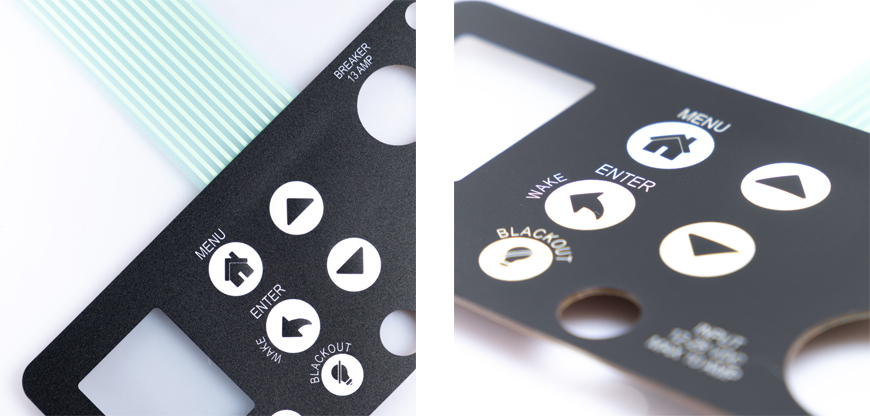
In today's fast-paced world, technology surrounds us in various forms. From smartphones to laptops, we interact with a multitude of electronic devices daily. Often, the devices we use rely on a key component known as a membrane switch. These switches play a crucial role in our daily lives, but have you ever wondered about the force required to activate them? In this article, we will delve into the intriguing world of membrane switches, exploring their actuation force, and providing insights into their importance in modern technology.

Before we dive into the actuation force of membrane switches, let's first understand what they are. A membrane switch is a thin, flexible circuit that uses pressure-sensitive adhesive, such as polyester or polycarbonate, to communicate a user's commands to an electronic device. These switches are commonly found in various applications, including remote controls, microwave ovens, and medical equipment. For those looking to tailor these components to specific needs, custom membrane keypads offer the flexibility to design switches that meet unique requirements, ensuring optimal performance and user experience in a wide range of applications.
A membrane switch consists of several essential components:
1. Graphic Overlay
The graphic overlay is the top layer of the membrane switch, featuring printed symbols or labels that indicate the functions of each key.
2. Top Circuit Layer
Beneath the graphic overlay, you'll find the top circuit layer, which is responsible for conducting electrical signals when pressure is applied to the keys.
3. Spacer Layer
The spacer layer separates the top and bottom circuit layers and provides the necessary separation to prevent unintended activation.
4. Bottom Circuit Layer
The bottom circuit layer serves as the base of the membrane switch, containing the circuitry that connects to the electronic device.
Now that we have a basic understanding of membrane switches, let's delve into the critical aspect of actuation force.
Actuation force, also known as operating force, is the amount of pressure required to press a key on a membrane switch and make it register as an input. It is a crucial parameter because it determines how easy or challenging it is for a user to activate a key.
Actuation force plays a significant role in user experience and device functionality. Here's why it matters:
1. Comfortable Typing Experience
In keyboards and keypads that use membrane switches, the actuation force directly impacts typing comfort. A higher actuation force may require more effort to press keys, potentially leading to user discomfort during prolonged use.
2. Error Reduction
An optimal actuation force ensures that users don't accidentally press keys, reducing the chances of input errors. This is especially crucial in critical applications like medical devices and industrial equipment.
3. Durability
The actuation force also affects the durability of membrane switches. A well-balanced actuation force can extend the lifespan of the switch by reducing wear and tear.
The actuation force of a membrane switch varies depending on the design and intended application. Manufacturers carefully consider factors such as user comfort and device functionality when determining the appropriate actuation force.
Several factors can influence the actuation force of a membrane switch:
1. Membrane Material
The type of material used in the membrane switch, such as polyester or silicone rubber, can affect the actuation force. Different materials have varying levels of flexibility and resistance.
2. Overlay Design
The design of the graphic overlay, including the shape and thickness of the keys, can impact the actuation force. Tactile feedback and key travel distance are also considered in the design process.
3. Application Requirements
The specific requirements of the device's application play a crucial role in determining the actuation force. For example, a medical device may require a different actuation force compared to a television remote control.
In conclusion, the actuation force in membrane switches is a critical factor that influences user experience, durability, and functionality. Understanding the importance of actuation force can help membrane keypad manufacturers design better devices that cater to users' needs while ensuring reliable performance.
If you're curious about the actuation force of a membrane switch in a device you own, you can always check the user manual or contact the manufacturer for more information.
Now, let's address some common questions related to membrane switches:
The typical actuation force for a membrane switch in a keyboard ranges from 60 to 70 grams of force.
Membrane switches tend to be more durable in terms of the number of keypresses they can withstand, making them suitable for applications where longevity is essential.
In some cases, manufacturers may offer customizable actuation force options for specific applications, but this is not common for consumer devices.
While membrane switches offer durability and cost-effectiveness, some users may find them less tactile and responsive compared to mechanical switches.
Yes, membrane switches can be replaced or repaired if they become faulty. However, it's essential to seek professional assistance for such tasks to maintain the device's functionality.